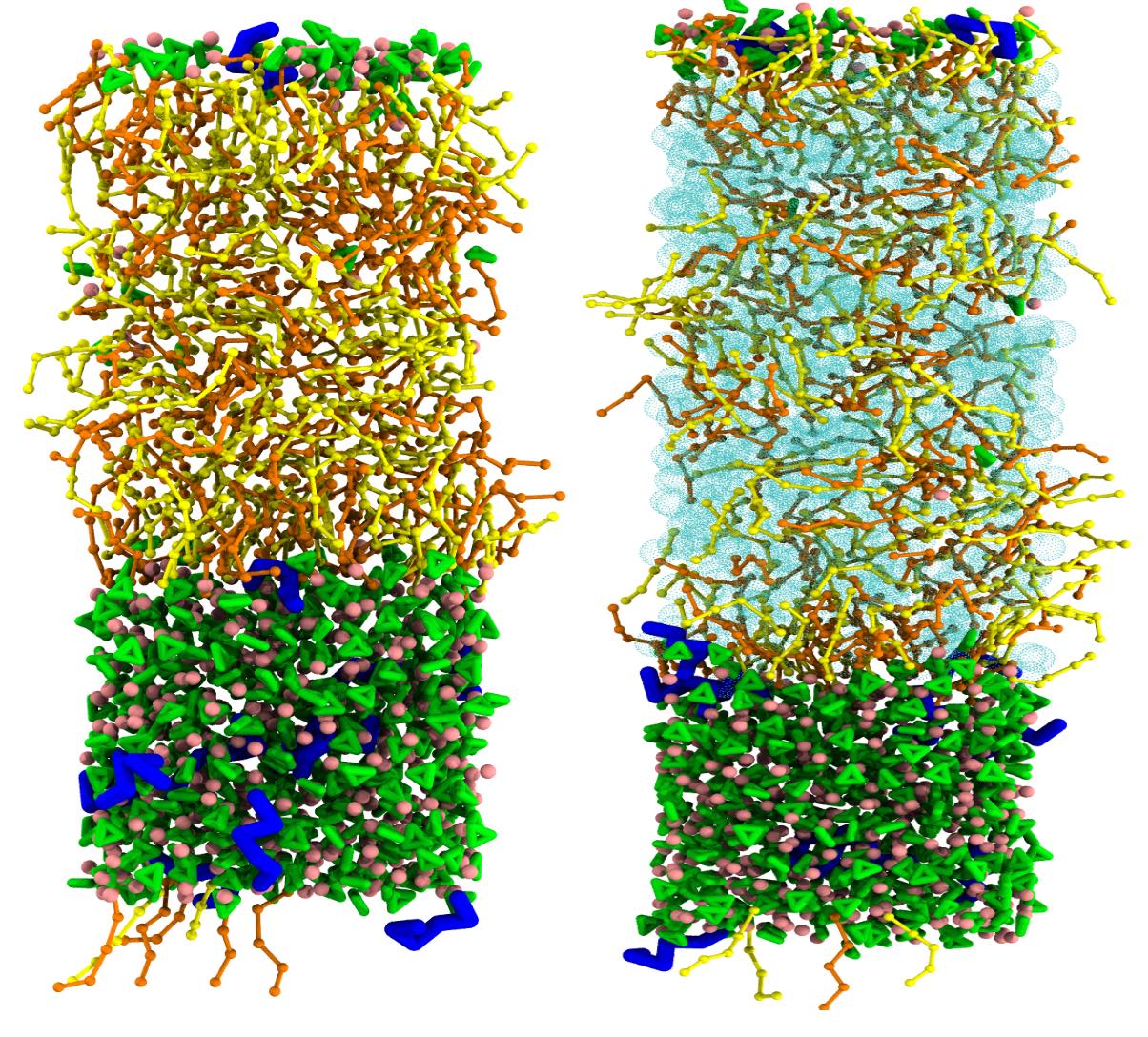Green solvents
- Details
- Last Updated: Thursday, 18 February 2021 15:41
 Historically, the Martini model has been developed for the simulation of biological membranes formed by lipids. With lipids being one special class of surfactants, early on Martini was extended to simulate the assembly and interaction of other synthetic ionic and non-ionic surfactants.
Historically, the Martini model has been developed for the simulation of biological membranes formed by lipids. With lipids being one special class of surfactants, early on Martini was extended to simulate the assembly and interaction of other synthetic ionic and non-ionic surfactants.
Recently, interest in surfactants has renewed as ionic liquids (ILs) have attracted much attention for their use as bio-compatible and green solvents and co-solvents. This has led several authors to use Martini to simulate the self-assembly of IL mesophases [1,2], the process of IL mediated extractions [2,3, see Figure], phase diagrams [2,4], as well as to guide the design of de novo molecules [3].
We expect this field to be growing rapidly, in particular with the new opportunities offered by Martini 3.
[1] E. A. Crespo, N. Schaeffer, J. A. Coutinho, G. P ́erez-S ́anchez, J. Colloid Interface Sci. 2020, 574 324.
[2] L. I. Vazquez-Salazar, M. Selle, A. H. de Vries, S. J. Marrink, P.C.T. Souza, Green Chem. 2020, 22 7376. doi:10.1039/D0GC01823F
[3] G. Huet, M. Araya-Farias, R. Alayoubi, S. Laclef, et al., Green Chem. 2020, 22 2935.
[4] N. Schaeffer, G. P ́erez-S ́anchez, H. Passos, J. R. Gomes, N. Papaiconomou, J. A. Coutinho, Phys. Chem. Chem. Phys. 2019, 21 7462.


























































































































































